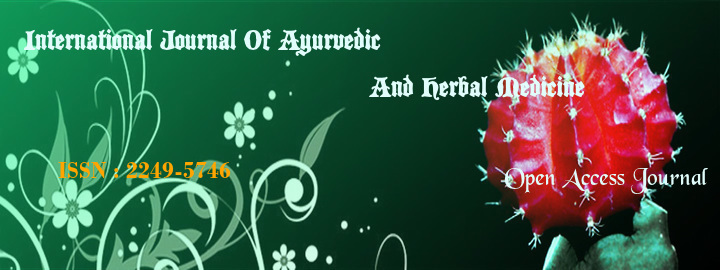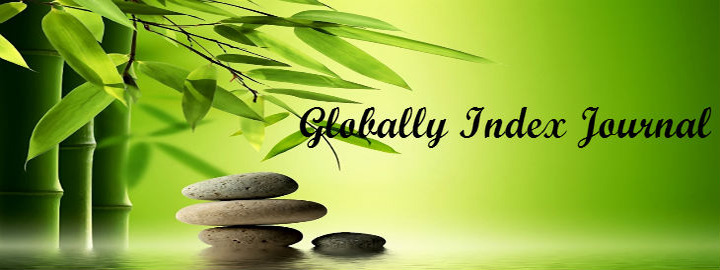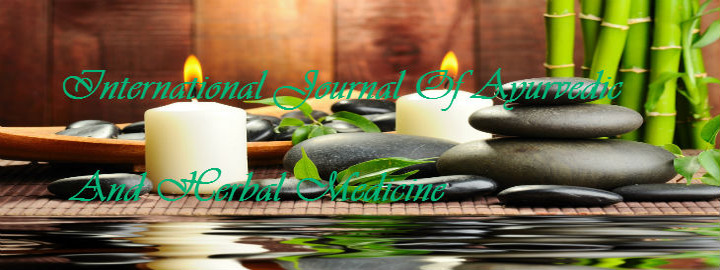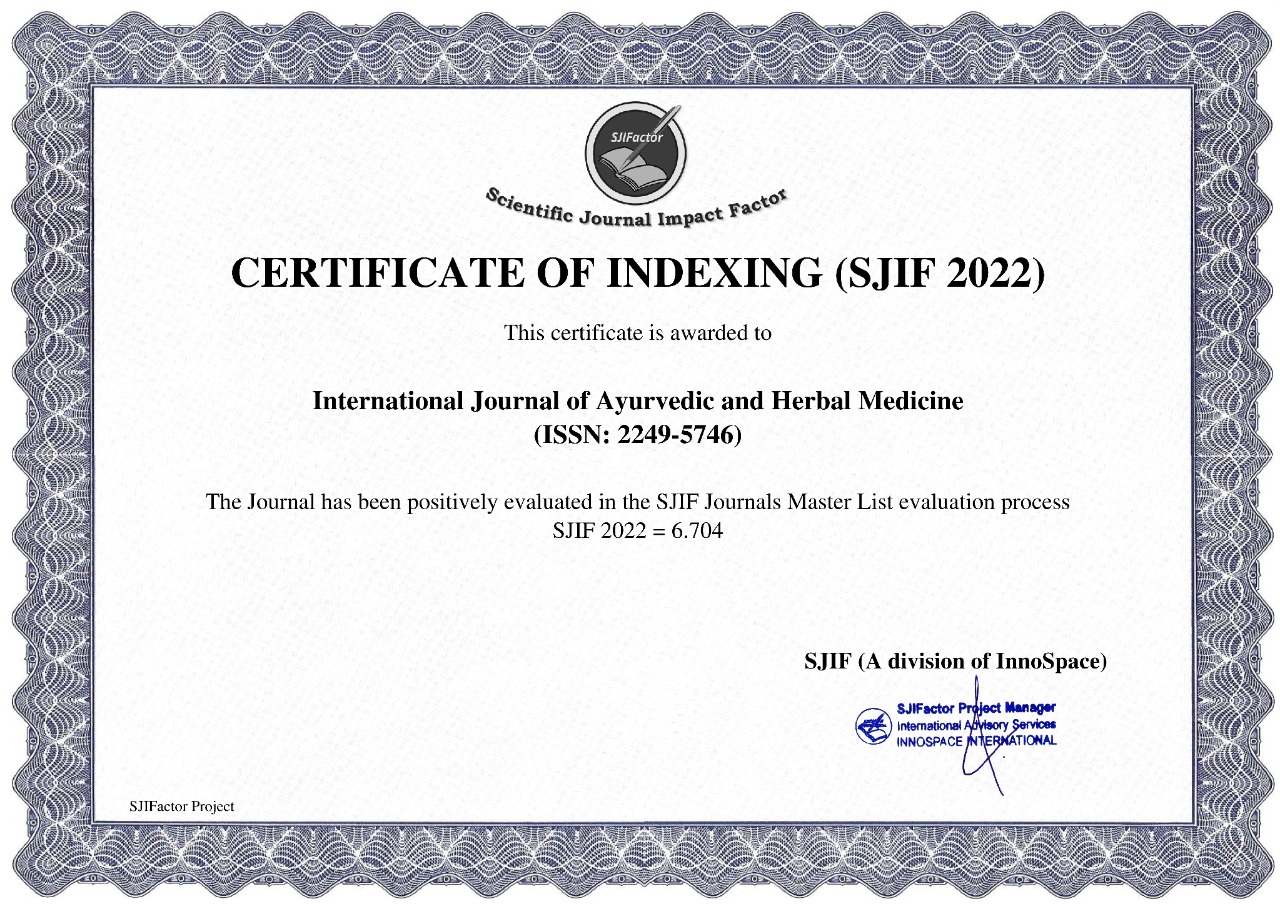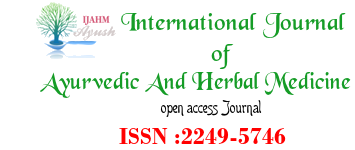


Anowi Chinedu Fredrick1, Utoh- Nedosa, U.A2, Okafor Uche U3 and Anikpe Nwabunwanne Alloysius4
1,4Dept of Pharmacognosy and Traditional Medicine, Faculty of Pharmaceutical Sciences, Nnamdi Azikiwe
University, Awka, Nigeria.
2 Dept of Pharmacology and Toxicology, Faculty of Pharmaceutical Sciences. Nnamdi Azikiwe University,
Awka, Nigeria
3Dept of Medicinal and Pharmaceutical ChemistryP, Faculty of Pharmaceutical Sciences, Nnamdi Azikiwe
University, Awka, Nigeria.
Abstract
A large percentage of Nigeria population especially those in rural areas depends on traditional medicine as a source of primary health care including malaria. Nauclea latifolia is one of those plants used in the treatment of malaria especially by the people of Ogidi in Anambra State of Nigeria. They claim that the plant is an effective anti-malaria drug. To verify this claim, there is the need for the investigations into the anti-malarial potential of the leaves extracts of Nauclea latifolia as it is claimed by the natives to have antimalarial activity
The leaves of Nauclea latifolia were collected from the wild, and dried for two weeks. 500g was pulverized and marcerated in 1000mls of ethanol for 48hrs with constant shaking. it was then filtered and the procedure was repeated with the marc. The combined filtrates were concentrated under reduced pressure with rotary evaporator. The preliminary phytochemical tests were carried out using standard methods. The anti-malarial screening was conducted using the curative test (established infection) method to assess the efficacy of the extract as therapeutic agent.
It was observed from the work that the leaves contain the following secondary metabolites - flavonoids, saponins, alkaloids, Carbohydrates, steroids and terpenoids.
The ethanol extract of the leaves of Nauclea latifolia was found to be effective against malarial parasites as claimed by the natives from the work done.
REFERANCES
1. 1. Abdulelah HAA, Zainal A (2007). In vivo antimalarial tests of Nigella sativa (Black seed) of different extracts. Am. J. Pharmacol. Toxicol. 2: 46-50.
2. Abeku TA (2007). "Response to malaria epidemics in Africa". Emerging Infectious Disease.
3. Ali LA,Adersokan AA , SalawuOA , akanji MA and Tijani AY . antiplasmodial activity of aqueous root extract acacia nilotica.African journal of biochemistry Research, 2011 5(7): 24-219
4. Ayoola G, Coker H, Adesegun S, Bello A, Obaweya K, Ezennia C (2008). Phytochemical screening and antioxidant activities of some selected medicinal plants used for malaria therapy in Southwestern Nigeria. Trop. J. Pharmaceut. Res. 7 (3): 1019-1024.
5. Bartoloni A, Zammarchi L (2012). "Clinical aspects of uncomplicated and severe malaria". Mediterranean Journal of Hematology and Infectious Diseases 4 (1): e2012026.
6. Burkill HM , the useful plants of tropical west African, Royal Botanical Garden, 1985, vol2, families A-D,pp. 254-257.
7. Caraballo, Hector (May 2014). "Emergency Department Management Of Mosquito-Borne Illness: Malaria, Dengue, And West Nile Virus". Emergency Medicine Practice 16 (5).
8. Clarkson, C., Maharaj, V.J., Crouch, N.R., Grace, O.M., Pillay, P., Matsabisa, M.G.,
9. Cohen S, Butucher GA., Mitchell G H (1972): In vitro studies of malaria antibodies. Proc. Helminthol.soc.wash; 39,231-237
10. Garnham P.C.C (1980):Malaria in its various vertebrate hosts:Malaria, J.P. Kreier Editor, Academic Press, Vol. 1, pp. 95-144.
11. Harborne JB (1973). Phytochemical methods. (Third edition). Chapman and Hall Ltd, London, Pp. 135-203.
12. Maje IM, Anuka JA, Hssaini IM (2007). Evaluation of the anti-malarial activity of the ethanolic leaves extract of Paullinia pinnata linn (Sapindaceae). Nig. J. Pharm. Sci. 6 (2): 67–72.
13. Okokon, J., Ofodum, K.C., Ajibesin, K.K., Danlandi, B & Gamaneil, K.S. 2005. Pharmacological screening and evaluation of antiplasmodial activity of Croton zambesicus against P. berghei infection in mice. Indian J. Pharmacol
14. Organization, World Health (2010). Guidelines for the treatment of malaria (2nd ed. ed.). Geneva: World Health Organization. p. ix. ISBN 9789241547925
15. Sofowora, H. 1993. Screening Plants for Bioactive Agents In: Medicinal Plants andTraditional Medicine in Africa, Spectrum Books Ltd., Sunshine House, Ibadan. Nigeria, 2nd Ed. 134156 pp.
16. Trease G.E and Evans W.C (1996): Textbook of pharmacognosy, 14th ed. WB Sanders, London.
17. Trease GE, Evans WC (1989). Textbook of Pharmacognosy. 14th Edition. W.B. Sanders, London.
18. W.H.O (1982): Synopsis of the World Malaria Situation in 1981. Wkly Epidem. Rec.,56-21:161
index







